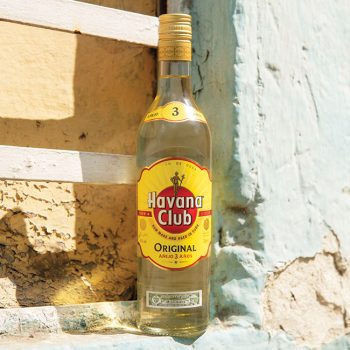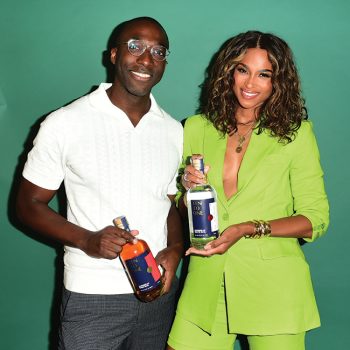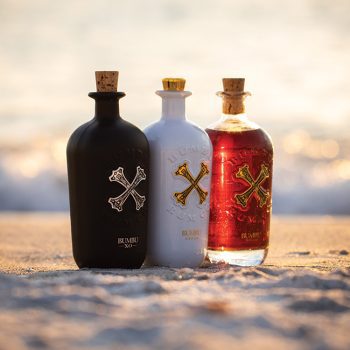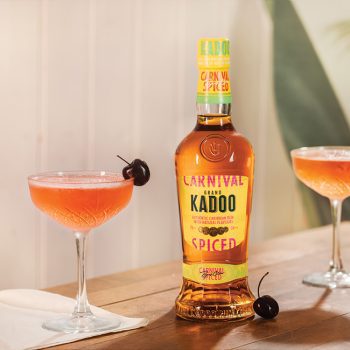Is rum finally turning premium?
The hope that premium-and-above rums will become more popular has been touted for a few years, but it looks as though that may finally be happening, as brands and consumers focus on quality.

*This feature was originally published in the March 2024 issue of The Spirits Business magazine.
Rum has long been tipped for a resurgence, with the likes of Drizly, Master of Malt, and DoorDash predicting a revival in recent years. The category has had an image makeover, moving away from its reputation for being used in sweeter cocktails to being taken more seriously as an aged spirit for sipping.
It’s evident from industry data that higher-priced segments are driving growth in the category, similar to the way in which gin and Tequila have grown at the higher end in recent years. But has its growth rate been affected by the economic environment as consumers look to tighten their purse strings? A recent Drizly survey found that one-third of respondents were more likely to spend money on rum than whisky.
“I’m confident that the resurgence in specific subsections of the rum market is already under way, and this momentum is anticipated to persist across Europe in the upcoming year and beyond,” says Ryan McFarland, chief commercial and strategy officer of Drinksology Kirker Greer. “Fundamental drivers include the sustained consumer inclination towards premiumisation and the increasing popularity of cocktails, in the on-trade and at home.”
Data from IWSR showed that the global rum category grew by 9% between 2021 and 2022, but is expected to grow by a compound annual growth rate (CAGR) of 2% over the next five years (2022-2027). The premium-and-above rum segment performed well in 2022 (up by 9% on the previous year), but IWSR estimates slower growth of 2% over the next five years. In comparison, the super-premium-and-above segment is predicted to grow at a CAGR rate of 6% between 2022 and 2027, after a 10% increase in 2022.
“Premium and super-premium, which used to be small 15 years ago, is now 4%-5% of the global market,” says Matthieu de Lassus, the CEO of Spiribam. It’s a category that is growing, but from a small base, he notes.

The CEO of Pernod Ricard-owned Cuban brand Havana Club is also positive about the category’s growth. “We’re delighted that the rum category is now accelerating thanks to impressive sales growth, new entrants and product innovation and we expect to see this upwards trajectory continue,” says Christian Barré. “There’s still a lot of potential, especially within the super-premium and ultra-premium segments, to reach a similar level of growth experienced by premium Tequila and gin in recent years.”
IWSR says the top five markets for super-premium-and-above rum are: the US, France, Germany, Italy and Australia.
There’s also a growing interest in rum among drinkers in the UK. Data from CGA by Nielsen IQ (year to July 2022) revealed sales of rum surpassed £1 billion (US$1.2bn) a year in Great Britain’s on-trade, meaning it now accounts for a bigger market share than whisky. CGA confirmed that this remains the case with total rum value at £1.1bn in the 12 months to December 2023, compared with total whisky at £959 million. Although rum (and whisky) declined by 2% in 2023, the category is ahead of all other spirits categories, with the exception of cream liqueurs and brandy (and comfortably ahead of total spirits, which is down by 6%), CGA noted.
“Golden (down by 4%, makes up 59% of value share of rum, down one percentage point versus a year ago) and white (down by 2%, 23% share, +0.1pp) are in decline, but dark rum is in growth at +5% (18% share +1pp),” adds Paul Bolton, CGA by NIQ’s client director for drinks. “Spiced rum, which sits across golden and dark, is also in decline at -2% (58% value share, +0.1pp). Dark’s success is driven by the (spiced) subcategory leader, which appeals to a younger demographic, as well as retaining a premium image. Other spiced brands, though, see strong growth, while more mainstream brands drag down overall performance.”
In the UK, IWSR estimates 8% growth for super-premium-and-above rums (CAGR 2022-2027), following a 23% rise in 2022.
Patrick Fisher, senior market analyst – UK, IWSR, says: “After registering strong growth in the previous years, rum flatlined in 2022, with volume growth largely limited to super-premium-and-above products, which remain a small niche segment. Category growth is being driven by spiced rum, which accounts for around half of overall volume.”

There are also signs that rum is booming and attracting major interest from drinks companies, as reflected by acquisition activity in the past year. Brown-Forman added its first rum, Diplomático, to its portfolio, while Diageo bought Filipino producer Don Papa. Pernod Ricard significantly increased its minority investment in Sovereign Brands, maker of Caribbean rum Bumbu, and Ciara-backed Ten To One Rum secured investment from Pronghorn, a US-based spirits accelerator for Black-founded businesses.
“Prospects for growth in the upper-end segments were boosted by the acquisition of Don Papa by Diageo and Diplomático by Brown-Forman, with both products having a sweeter taste profile,” Fisher notes.
The US is the biggest market for rum, and could be set to benefit from a slowdown in growth for Tequila and a decline for Cognac. Spiros Malandrakis, head of research – alcoholic drinks at Euromonitor International, says the US “appears to be witnessing some level of resurgence when it comes to rum, driven by super-premium and prestige”.
Malandrakis has noted that the rum category could be boosted by “cross-trading”, as drinkers of higher-priced spirits, such as whisky or Cognac, could look to more affordable premium segments such as rum. According to IWSR, the average price of a bottle of Tequila or whisky is two times that of a bottle of vodka or rum. Malandrakis notes that drinkers in the US have been consuming super-premium Tequila for the past five years and, as interest wanes, it could lead to consumers exploring the rum category.
Influenced by Tequila
To see similar levels of growth, could rum imitate the success that Tequila has used in its marketing? Marc Farrell, founder of Ten to One Rum, believes so. “If you think about spring break 15 years ago, you see two slushie machines turning over the same time. One has a Margarita and the other probably has a Strawberry Daiquiri. One of those cocktails has jumped the shark – you can find a spicy Margarita in any cool downtown bar, you can find it anywhere. We’re looking for the opportunity to do the same thing with rum.” He highlights the Daiquiri as a simple cocktail, made with lime and sugar syrup, as an example of a serve that could do what the Margarita has. “The big opportunity for rum is in following Tequila’s footsteps to reposition the liquid in the hearts and minds of consumers,” he adds. Ten to One Rum is set to launch in the UK and France this year.
Patrizia Damiani, global brand director for Diplomático, believes Tequila is an “excellent benchmark for rum”. She points to Tequila’s former reputation for being consumed as a shot, and how it has “evolved into super-premium”, with higher pricing. “We’re still a little behind that with rum,” she adds. Under Brown-Forman’s ownership, the brand will continue to focus on driving sales in Europe, where it is the number-one super-premium rum brand, and the US. In Europe, the brand’s top markets are France, Germany, Czech Republic and Italy, while Australia was highlighted as a “very relevant” market.
Spiribam, which owns brands such as Chairman’s Reserve, Clément, and Bounty, is focusing on the UK market, which has “huge potential” says de Lassus. Last year, Bounty rum partnered with Notting Hill Carnival on an activation in tandem with the St Lucia Tourism Board, and there are plans to “level up” Bounty’s presence at the festival this year, and establish it as a carnival brand.

The company is also hoping to focus on education in bars with Chairman’s Reserve, and will launch its Art of Blending activation in the UK this year, hosted by its master blender. A female-focused campaign, called She’s The One, will also spotlight female bartenders in the UK this year.
Bumbu rum has also seen considerable success in the UK, becoming the top-selling super-premium rum in the on-trade (Nielsen) in the year to 9 September 2023. Bumbu also became the 10th-largest rum brand in the UK off-trade in 2023, growing its value by 36% (Nielsen data). The brand also has a celebrity name attached, with rapper Lil Wayne fronting it. Sovereign Brands founder Brett Berish says associations with celebrities must be “authentic”, and that they bring awareness to brands. He is hoping to “find the right [high-profile] person in the UK” to partner with.
Hit by inflation
Malandrakis notes that current economic volatility remains the biggest challenge facing all spirits brands, including rum. It’s also a particular challenge in Western Europe, which has been hit hard by inflationary pressures. It’s apparent when looking at sales of one of the biggest rum brands in the world, Captain Morgan, which saw its organic sales drop by 7% in Diageo’s financial results for the second half of 2023. In the US, the brand dipped by 2%. Diageo’s total rum sales dropped by 5%, led by declines in Europe.
Meanwhile, Havana Club, a brand that can’t be sold in the US because of the US-Cuba embargo, reported growth of 6% in the year to 30 June 2023. Barré previously said that the US was 35% of the world rum market, meaning the brand only has access to 65% of that marketplace.
“We’re seeing solid growth in both the brand and the category’s historic markets – the UK, Germany and France – alongside other European markets such as Italy, Spain and Greece, where we’ve enjoyed healthy growth during the past year,” says Barré. “Beyond Europe, we’re seeing an untapped opportunity offering a strong growth potential for the future for our rums across new and emerging markets such as China, India and Turkey.
“Plus, we’ve leveraged some strong opportunities in accelerator markets – such as Mexico and Benelux – over the past year, where Havana Club outperforms the wider category in most regions.”
Havana Club is hoping to attract a younger demographic of drinkers though its artistic partnerships, which include creating limited edition products with rappers such as Skepta.
Artists on board
Barré adds: “Our portfolio of artistic collaborations – with the likes of grime sensation Skepta, ‘African giant’ Burna Boy, streetwear powerhouse Places+Faces, and many more established or up-and-coming artists – enables young adults to enjoy the exclusivity of owning a limited edition product as they begin their journey into the rum category.
“This represents the entry point into the exquisite world of rum in a way that feels familiar to them, providing sales opportunities into more premium expressions further down the line. This stream of product innovation drives excitement among existing rum fans, while also resonating with a new audience of Gen Z legal-drinking-age consumers.”
It’s clear there is room for further growth in rum as drinkers look to explore other segments. Euromonitor’s Malandrakis notes a “slow but steady narrative” for the category: “In the next couple of years I’ll start looking at data that doesn’t cover collapses, economic crisis, inflation, Covid-19, etc. I’m cautiously optimistic about rum.”
How is your brand positioning itself in its marketing?
Christian Barré – CEO, Havana Club
“We know that today’s consumers are increasingly looking for opportunities to connect with brands above and beyond the products available. And this is exactly what our international marketing platform, Cuban Mode, seeks to do.
“Cuban Mode is all about celebrating our heritage and the unique Cuban mindset called ‘la Cubanía’. Beyond a place of provenance, to us Cuba is indeed a mindset: this unique creative energy born in the streets of Cuba and nourished by the diversity of the Cuban people, but felt everywhere and meant to be shared worldwide.
“Through this campaign we want everyone to experience this Cubanía and understand that, in addition to enjoying a top-quality Cuban rum, they are also experiencing a piece of Cuba’s rich cultural heritage when they purchase a bottle of Havana Club.”
Do you expect rum to experience a resurgence in the year ahead?
Alexandra Alfaro – global marketing director, Guatemalan Spirits
“Rum is experiencing quite a positive momentum, and we envision this ‘wave’ to continue growing in 2024. More and more, rum is stealing the spotlight in several places around the globe. For Guatemalan Spirits, it is an encouraging moment, and a great opportunity for rum brands like our own Botran Rum to continue to actively be part of this resurgence. With Botran, we have focused on making announcements about the brand via a well-set innovation strategy that includes the launch of new variants, as well as exclusive limited-editions in the coming years. This is what has attracted new consumers to the brand, especially ones from younger demographics, as they continue to show increased interestin premium rum, and, especially, in the magic behind ageing rum.”
What is your company doing to attract a younger demographic?

Ali Pickering – chief marketing officer, Drinksology Kirker Greer
“Our strategic approach to engaging a younger demographic involves leveraging key market insights. We’ve identified a rising trend in the popularity of cocktails, particularly fuelled by growing consumer confidence in experimenting with mixed drinks – a phenomenon exacerbated by the pandemic.
“Our Kadoo Carnival range was introduced to meet the demand for a vibrant cocktail experience; especially in social settings at home, or in higher-energy venues catering to a younger audience. This authentic Caribbean rum collection features bold flavours like coconut, pineapple, and banana. It’s been crafted to infuse Caribbean vibrancy and colour into these social occasions, while offering a quick and exciting cocktail experience, acknowledging the time constraints and desire for simplicity that this younger target demographic values.”
Related news
Top 10 spirits for gifting this summer
